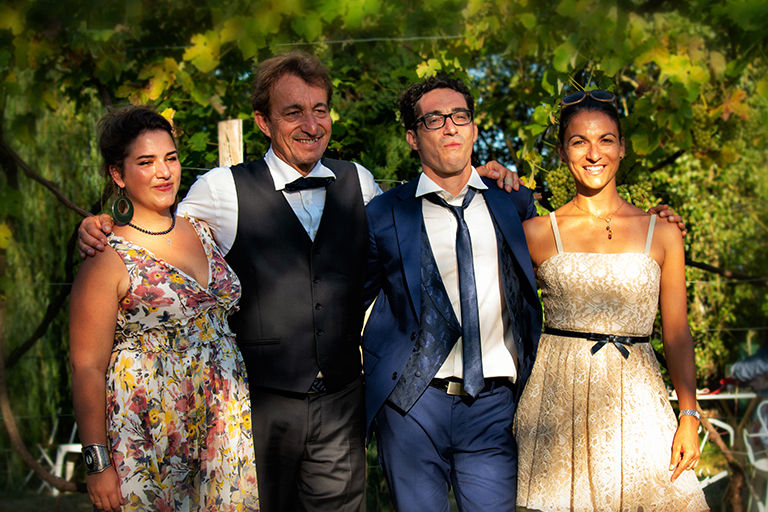The Vineyard
deep, long-standing roots
In 1926, my grandparents, Henri Bouil and Micaela Tomas, bought the estate, which at the time was just a simple, Gascon vineyard. The family story has it that apparently my grandfather parted with a plot of Béarnais vines and, for her part, my grandmother brought all her Spanish know-how.
Very quickly, they restored and modernized the wine cellar and built a cement vat. The wine was produced independently on the estate and they bought a car to deliver it to their customers. Henri, who was really concerned about quality and who knew the terroir well, refused to use a tractor in his vines so as not to pack down the soil.
Antoine Tomas-Bouil, my father, once he got his school certificate, decided to work on the estate. He learnt all the everyday gestures for an environmentally friendly agriculture. In 1959, he took over the vineyard and carried on with the winemaking according to the family tradition. Most wine-growers in the region joined together to form a cooperative but my father preferred to work alone and continued the winemaking of his whole production on the estate. From passion and, according to him, “to keep alive”, once he retired, he continued working and making wine on a small plot right up to his death.
I myself then decided to take over the vines and to carry on winegrowing in the family tradition. To optimize the estate, I bought a plot of land with one-hundred-year-old vines on it and undertook renovation work on the wine cellar. In 2017, the winegrowing business which went back ninety years was reborn under the name “Maison Henriette Dubourdieu”, in honour of the person who contributed her work and passion to it, my mother.
Nearly one hundred years after pressing the first wine, the grape juice carries on fermenting and being turned into wine, according to the family tradition, with techniques and a passion passed down from generation to generation.
The thinning-out of the leaves is done by hand throughout the whole of the vineyard. When the grapes begin to change colour, the ones touching each other are eliminated. The combination of all this work means that the vines are lightened out and the risk of the proliferation of fungal diseases is reduced.
In fact, because of this the use of treatment with chemical or biological substances is reduced.
The plots are surrounded by woods or hedges. These bocages regulate the temperature and are a paradise for insects which are useful for the vines.
“Maison Henriette Dubourdieu” is starting on a conversion to organic agriculture and is thinking of obtaining the HVE (High Environmental Value) certification.




Terroir and Varieties of Grapes
Tradition and Coherence
On the border of the Adour valley, the vineyard is located on the first slopes of the Coteaux de Gascogne. The soil is gravelly, silty with tawny sand, rich in mineral elements, well-drained and with a good useful reserve of water. We also use advanced techniques to analyse the soil and enrich it, if necessary, with natural nutrients by maintaining alternate grassing.
“Maison Henriette Dubourdieu” has only planted endemic varieties of grapes:
● RED: 65% Tannat, 25% Cabernet Franc and Sauvignon, 10% Fer Servadou.
● WHITE: 1/3 Petit Manseng, 1/3 Baroque and 1/3 Sauvignon.
This fusional association of the terroir and the variety of grapes enables natural aromas to develop with a specific aromatic profile and it has been carefully thought out for each of the nine plots which make up “Maison Henriette Dubourdieu” vineyard.
